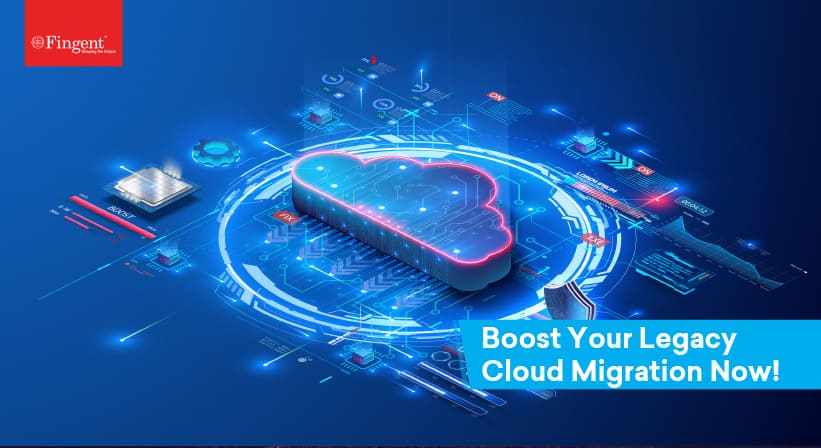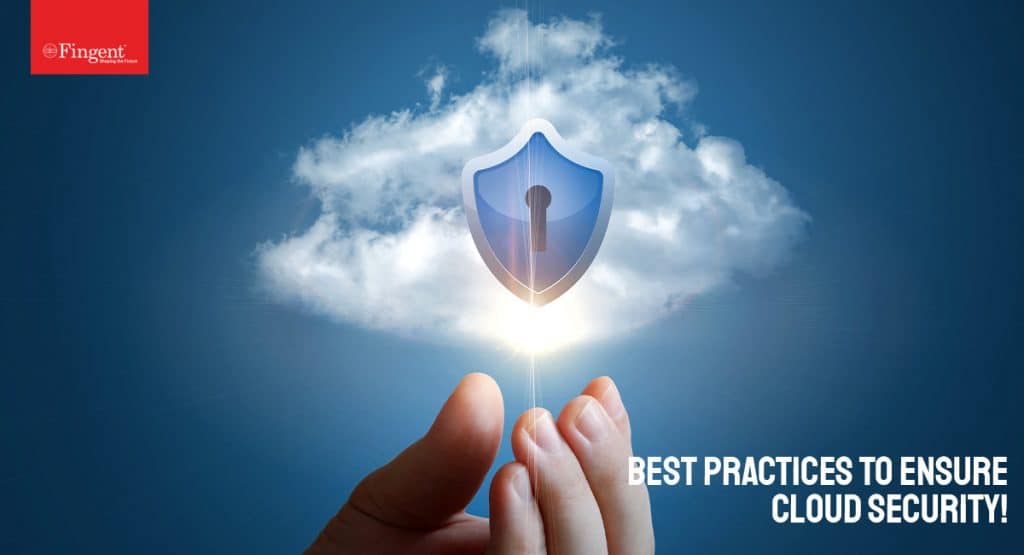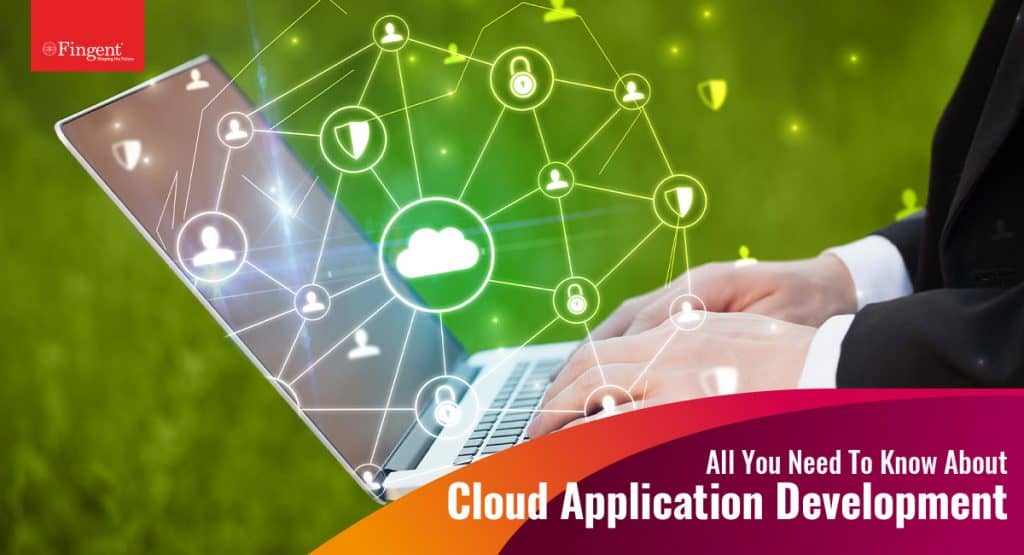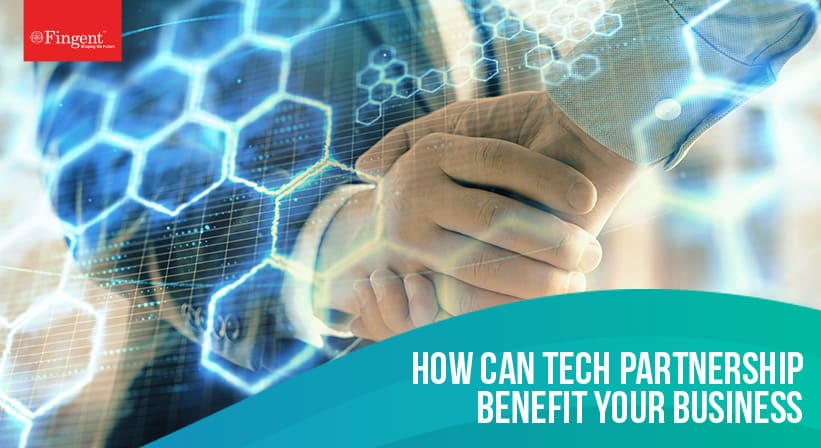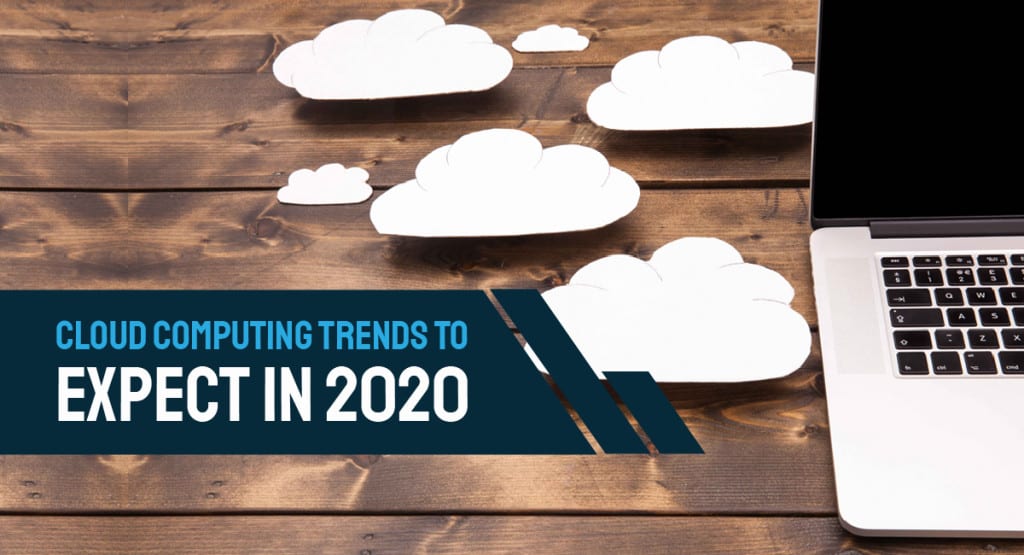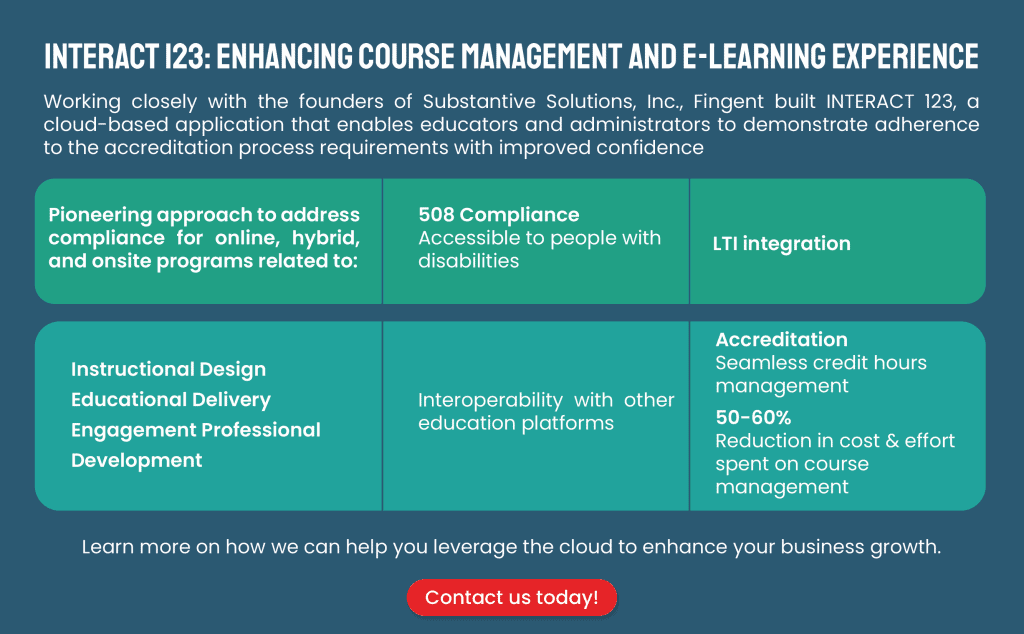Tag: IaaS
Software as a service (SaaS) is a fast-growing IT segment that commands the highest adoption rate among public cloud services, such as PaaS, IaaS, BPaaS, and others. In 2020, the worldwide end-user spending on Cloud Application Services (SaaS) accounted for USD 102,798, which shot up to a massive USD 122,633 at the end of 2021. Gartner examines that the adoption of scalable, on-demand cloud models enabled businesses to achieve cost efficiency and business continuity in a pandemic-afflicted economy. The rise in the adoption of public cloud services is giving an impetus for organizations to accelerate their digital transformation plans.
Understanding more about SaaS app development is significant because it:
- Helps optimize IT costs and conserve cash,
- Aids and secures remote work, and
- Ensures business resiliency.
Watch video: Advantages of moving your key workloads to cloud
SaaS solutions are inevitable in building and sustaining a collaborative, agile, mobile, and hybrid work environment. This post sums up the nitty-gritty you need to know about SaaS application development.
What is SaaS application development?
Ever since the launch of the internet, Application Service Providers (ASPs) that deliver software to users over the internet on a subscription basis have been popular. ASPs allowed users to subscribe to the applications and associated functionalities by following a usage-based transaction pricing model. While it was a major breakthrough, ASPs weren’t fully successful in reducing IT costs and simplifying deployments and upgrades. Thanks to cloud computing; the rise of SaaS applications has lowered the development time, cost, and effort for enterprises. Businesses of all sizes are now expanding their investments in SaaS development.
Software as a service (SaaS) is a software licensing and distribution model in which the application is centrally hosted on the cloud and is maintained and updated by the SaaS developer. Along with Infrastructure as a service (IaaS) and Platform as a service (PaaS), SaaS is one of the key cloud computing models that’s widely marketed to both business (B2B) and individual (B2C) users. Netflix, Office 365 suite, Google Workspace, Cisco WebEx, etc. are the common SaaS products that we use every day.
Read more: Top business drivers that power legacy cloud migration
Why are businesses investing in SaaS app development?
SaaS was an extremely profitable business segment in 2020. According to a 2018-2023 forecast, companies running on SaaS will rise from 51% to 86% in a span of five years. SaaS-based solutions have enabled several business sectors, including virtual collaboration, e-commerce, FinTech, supply chain automation, and healthcare to thrive despite the large-scale disruptions inflicted by the global pandemic. Here are a few factors that make SaaS a hot choice in the investor’s market.
1. Manage costs
SaaS applications require minimal upfront investments. The Pay-as-you-go model allows you to start with a small capital and expand later when you anticipate better business growth and profitability. SaaS application deployment takes less time and money when compared to a traditional on-premise system setup. Most SaaS providers offer dedicated application maintenance and support which saves you from hiring and managing expensive in-house IT teams.
2. Reduce IT dependencies
Your SaaS application development services provider will take care of hardware maintenance, system failures, and downtimes, software updates, routine maintenance, and backups, etc. Based on your business requirements and the services subscribed to, the SaaS provider will help you customize the application, upgrade the software to its latest version, and offer training to your staff. This helps you focus on the core business activities.
3. Seamless integration with other systems
SaaS-based applications can be integrated easily with your legacy systems or any other third-party software that you use. By developing custom APIs and plugins, SaaS providers like Fingent will help integrate your CRM with ERP or HRM with Payroll software. The SaaS application can work as an extension of your current software, adding value to your daily operations. Cloud infrastructure and on-demand computing model empower you to scale up and meet the surging demands.
4. Mitigate security risks
SaaS software providers are responsible for securing the application, operating system, platform, network, and physical infrastructure. Along with these security options, the SaaS provider will help secure your customer data and user access by applying a few techniques such as Identity and Access Management (IAM), cloud data encryption, Data Loss Prevention Software (DLP), compliance solutions, real-time threat intelligence, behavioral analytics, Cloud Access Security Broker (CASB) solutions, etc.
Read more: Why is cloud security important? What are the best practices to ensure cloud security?
Points to consider before starting your SaaS app development project
There are a few technical and business factors to consider while developing a SaaS product.
Technical considerations in SaaS development
- Database design: Choose a flexible and secure database(s) based on the data type, scalability, anticipated load, budget, programming languages used, read-to-write actions involved, and other specific business purposes.
- Technology stack: Right technology stack helps build the right SaaS product. By partnering with a SaaS provider like Fingent, you can leverage the latest and the best tech stack to incorporate all the required features into your SaaS application.
- Third-party services integration: Businesses that use SaaS products may want to integrate their applications with third-party services such as payment providers, chat and email service providers, customer-answering bots, etc. Ensure that the chosen third-party services are budget-friendly, scalable with your growth plans, credible, and offer excellent community support.
- Regular patches and updates: Your SaaS application should be up-to-date and scalable to match your clients’ growing demands. Software updates must be scheduled, and new functionalities and changes to existing features (feature enhancements) should be tested thoroughly.
Non-technical considerations in SaaS development
- Conduct market research: Prior to starting your SaaS project, it’s important to analyze the market, understand what users are looking for, study competitors, and then visualize your SaaS solution. The market analysis leads to better project planning with realistic goals in mind.
- Make the software user-friendly: The end-user of your SaaS product is not necessarily a techie. The software should appeal to the audience for which it’s built. Market it to the right audience by applying a fair pricing and subscription policy. Devise marketing strategies to improve client adoption.
- Ensure software compliance: Security risk is a major barrier to SaaS adoption. Before publishing your SaaS software, ensure that it has robust data protection and sharing policies, user access policies, regular software maintenance, and 100% compliance with standards such as GDPR, HIPAA, etc.
- SaaS pricing model: SaaS software market offers a variety of pricing models such as usage-based pricing, per-feature pricing, flat-rate pricing, tiered pricing, and so on. Determining the right pricing model depends on factors such as how much your customers are willing to pay, how far your product is capable of solving their problems, and how your competitors are charging for a similar suite of products. Ensure that the pricing model doesn’t stagnate your product.
SaaS app development best practices
Here are a few best practices to ensure the performance, productivity, and acceptance of your SaaS application.
1. Focus on MVP creation as the first step
Many SaaS developers use MVP (Minimum Viable Product) as the initial step for building a successful SaaS application. An MVP is a fully functional and quickly developed miniature version of an application built to test the SaaS product’s viability. Developing an MVP will help you understand the feasibility of your business idea and the changes to be accommodated based on user feedback. It helps reduce your development cost and effort.
2. Multi-tenancy architecture
A SaaS application isn’t made for a single user. It should be flexible enough to serve thousands or even millions of customers. Multi-tenancy is crucial in cloud computing as it allows multiple tenants (users) with different roles and access privileges to be hosted in the same environment. Each user will have a separate and secured space within the server to store their data. Multi-tenant architecture improves your ROI and helps update and maintain your SaaS application.
3. Personalize your SaaS product
As remote and hybrid workspaces go mainstream, and BYOD becomes common, users seek personalized SaaS products that don’t require extensive admin support. Users demand high-level personalization with your SaaS app. For example, changing the UI’s appearance, integration of Single Sign On (SSO) feature, configuring the dashboard to track the metrics quickly, and so on. They may want the SaaS app to be available in both web and mobile and any other portable devices that they use. Make your SaaS app safe and compatible to address such personalization requirements.
4. Prioritize and optimize features
Adding too many features as well as avoiding important features are equally wrong. Consider the reach and impact of a feature addition, such as how many users will be affected or how many customers are looking for the new feature. Track the SaaS app’s usage patterns by leveraging analytics or run a survey to understand user preferences. If more than 50% of them like an existing feature, optimize it. If only 5% of your users are interested in a new feature, eschew it.
Read more: A comprehensive guide to modern cloud application development
How Fingent helps develop exceptional SaaS applications within your budget
With Fingent, you are just a few steps away from building and managing your own SaaS application development team. Right from developing an MVP to actual product launch and post-launch support, our team handholds customers through every stage of development.
InfinCE, the world’s first digital workplace orchestration platform, stands as a testament to our SaaS development capabilities. So are ReachOut Suite FSM and Skill Lake LMS. Our goal is to help businesses solve challenges through technology. We help legacy companies migrate their software solutions to the cloud as well as develop cutting-edge SaaS solutions that empower them to thrive in the new normal.
Read more: What makes Fingent your best technology partner
If you have an idea or a requirement, discuss it with us asap. We will set up a discovery call with you and get back with a ballpark estimate. This is followed by a detailed proposal, including mockups, demo videos, and visualizations. Our communication method is simple enough to answer your queries related to software app development. We do business with organizations of all sizes – small and large – to help them transform lives through technology. Ready to watch us in action? Talk to our SaaS expert now.
Stay up to date on what's new

Featured Blogs
Stay up to date on
what's new



Talk To Our Experts
A Quick Guide on the Cloud Service Models – Saas, IaaS, Paas!
The world is changing, quickly and fast; and to adapt to these growing changes, businesses are experiencing unprecedented stress on maintaining a robust and cost-effective IT Infrastructure. But thanks to Cloud Computing and its various service models – Saas, IaaS, Paas, businesses now have the option to move beyond on-premise IT Infrastructure for improved processing and storage capacity.
The future of computing is in the cloud! Missing out on it can definitely slow down the progress and performance abilities of a company. But before we dig deeper on how to seamlessly deploy Cloud Computing, let’s shed some light on what is cloud computing and what are cloud service models?
What is Cloud Computing?
If simply put, Cloud Computing is a model that offers convenient, on-demand network access to a pool of shared resources. This may include data storage, databases, servers, networking, tools, or any other resources that can be accessed through the internet. Speaking of cloud server models, cloud computing is offered in various service models, each of which satisfies unique business requirements. These servers are mainly of three types: Software as a Service (SaaS), Infrastructure as a Service (IaaS), and Platform as a Service (PaaS), about which you will read in detail below.
Once signed up with cloud service models Saas, IaaS, and Paas, one can leverage wider possibilities to bring flexibility and efficiency to support greater business growth. Enterprise cloud platforms like Infince makes this transition to the cloud even more seamless, providing the right security, control, and flexibility to scale and adapt with time.
Over the years cloud services have witnessed exponential growth worldwide. The global cloud computing market size was valued at USD 274.79 billion in 2020. It is expected to grow at a compound annual growth rate (CAGR) of 19.1% from 2021 to 2028. With the COVID19 pandemic giving rise to remote work culture, and with many industries gaining opportunities from advanced technologies like AI and machine learning, cloud computing is turning key with its ability to empower businesses with the flexibility to innovate and transform with growing technologies.
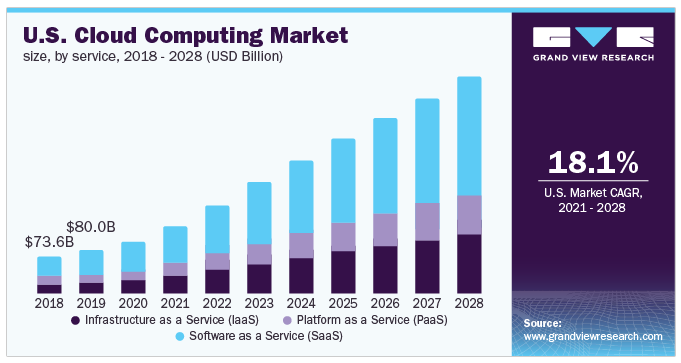
Fig: U.S. Cloud Computing Market, Source – Grand View Research
What these reports signify is a steady adoption of cloud services by businesses across the world to tackle the entire range of operations they do. Application development in cloud computing provides an extensive, flexible, and affordable way to implement cloud service models. Meanwhile, numerous leading players in the information technology sector now compete to deliver flexible cloud services for both the public and enterprises.
Increasing competition means better delivery of services and innovations, which can deeply benefit scaling up your business. Hence, now is the right time to deploy a cloud model into your business infrastructure.
What’s Ahead?
- Why does your business need Cloud Computing?
- What are Cloud Service Models?
- Adopting Cloud – Choosing between SaaS, IaaS, and PaaS
- SaaS
- IaaS
- PaaS
- What should you know about DaaS?
- Why is it important to choose the right Cloud Service Model?
- How can Cloud support your Custom Software needs?
- Cloud Service Models SaaS, IaaS, or PaaS: What fits your business?
Why Does Your Business Need Cloud Computing?
You must be wondering! Why do you need to adopt cloud service for your enterprise and what could it possibly do to widen the scope of your operations? Well, the pros of cloud adoption far outweigh its cons, which is one reason why you should consider it in the first place. Here are 3 major advantages of cloud adoption.
Scalable – A cloud service allows quick scaling up and down of computing resources to accommodate your changing needs.
Affordable – You pay less for a cloud service, as it eliminates unnecessary costs involved in hardware upgrades and maintenance.
Secure – By signing up for a cloud service, you are essentially making your data more secure using their industry-grade security protocols.
If you have envisioned a goal of making your business more dynamic, then the cloud is the way. And the question comes down to this: what type of cloud service model would you implement and which one will fit your unique business requirements?
Read more: How Infince, an integrated cloud platform, simplifies business management & collaboration!
What are Cloud Service Models?
Cloud computing services come mainly in three types of service models: SaaS (Software as a Service), IaaS (Infrastructure as a Service), and PaaS (Platform as a Service). Each of the cloud models has its own set of benefits that could serve the needs of various businesses.
Choosing between them requires an understanding of these cloud models, evaluating your requirements, and finding out how the chosen model can deliver your intended set of workflows.
The following is a brief description of the three types of cloud models and their benefits.
1. SaaS
SaaS or Software as a Service is a model that gives quick access to cloud-based web applications. The vendor controls the entire computing stack, which you can access using a web browser. These applications run on the cloud and you can use them by a paid licensed subscription or for free with limited access.
SaaS does not require any installations or downloads in your existing computing infrastructure. This eliminates the need for installing applications on each of your computers with the maintenance and support taken over by the vendor. Some known examples of SaaS include Google G Suite, Microsoft Office 365, Dropbox, etc.
2. IaaS
IaaS or Infrastructure as a Service is basically a virtual provision of computing resources over the cloud. An IaaS cloud provider can give you the entire range of computing infrastructures such as storage, servers, networking hardware alongside maintenance and support.
Businesses can opt for computing resources of their requirement without the need to install hardware on their premises. Amazon Web Services, Microsoft Azure, and Google Compute Engine are some of the leading IaaS cloud service providers.
3. PaaS
Platform as a Service or PaaS is essentially a cloud base where you can develop, test, and organize the different applications for your business. Implementing PaaS simplifies the process of enterprise software development. The virtual runtime environment provided by PaaS gives a favorable space for developing and testing applications.
The entire resources offered in the form of servers, storage, and networking are manageable either by the company or a platform provider. Google App Engine and AWS Elastic Beanstalk are two typical examples of PaaS. PaaS is also subscription-based and gives you flexible pricing options depending on your business requirements.
Adopting Cloud – Choosing Between SaaS, IaaS, and PaaS
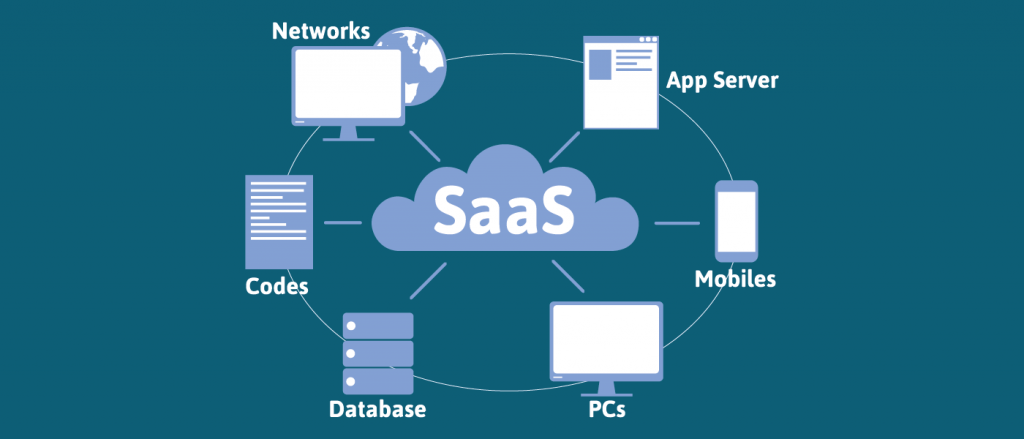
Going through the details of what SaaS, PaaS, and IaaS may have given you a general understanding of these three cloud models. Each of them differs and has a range of advantages and disadvantages that may or may not fit in with your business model.
By correlating each of these cloud models side by side, you could derive a conclusion on whether it suits your business requirements.

SaaS
Benefits:
- Affordable – SaaS is affordable as it eliminates the costs involved in the purchase, installation, maintenance, and upgrades of computing hardware.
- Anywhere Accessibility – With SaaS, you can access the services from anywhere using any device such as smartphones, which eliminates the constraints set by on-premise software.
- Ready to Use – You can quickly set up SaaS services so that they become functional in no time. All it takes is that you sign up for the service to get access to fast and powerful computing resources.
Why Should One Opt SaaS?
With SaaS, communication, transferring of content, and scheduling meetings are made easy. SaaS is the ideal choice for small-scale businesses that do not have the necessary budget and resources to deploy on on-premise hardware. Besides, companies that require frequent collaboration on their projects will find SaaS platforms useful.
Studies reveal that Supply Chain Management, Business Intelligence, Enterprise Resource Planning (ERP), and Project and Portfolio Management will see the fastest growth in end-user spending on SaaS applications, through 2022.
Things to Consider Before SaaS Implementation
- Opt for configuration over customization within a SaaS-based delivery model. The configuration will allow you to tailor without changing the core product, whereas, customization will make it challenging to scale with the constant updates and documentation.
- Understand the adoption and usage rates carefully, and set clear objectives to be achieved with the SaaS adoption.
- Compliment your SaaS solution with integrations, and security options to make it more user-initiated.
Read more: Top Trends That Will Transform Cloud Computing in 2020 and Beyond!
IaaS
Benefits:
- Minimize Costs – Deploying an IaaS cloud model eliminates the need to deploy on-premise hardware that reduces the costs.
- Enhanced Scalability – As the most flexible cloud computing model, IaaS allows you to scale the computing resources up or down based on demand.
- Simple Deployment – IaaS lets you easily deploy the servers, processing, storage, and networking to make it up and running in no time.
Why Should One Opt IaaS?
IaaS being the most flexible of cloud models gives the best option when it comes to IT hardware infrastructure. IaaS is the right option if you need control over the hardware infrastructure such as managing and customizing according to your requirements.
Whether you are running a startup or a large enterprise, IaaS gives access to computing resources without the need to invest in them separately. However, the only downside with IaaS is that it is much costlier than SaaS or PaaS cloud models.
According to Gartner’s latest report, the worldwide infrastructure-as-a-service (IaaS) market grew 31.3% in 2018 to total $32.4 billion, and in 2019 it’s projected to be worth $38.9 billion. This growth will continue well into 2022, where it’s expected to be worth $76.6 billion.
Things to Consider Before IaaS Implementation
- Clearly define your access needs and the bandwidth of your network to facilitate smooth implementation and function.
- Plan out thorough data storage and security strategy to streamline the process.
- Ensure a disaster recovery plan so that your data remains safe and accessible at all means.
PaaS
Benefits:
- Minimal Development Time – PaaS reduces the development time since the vendor provides all computing resources like server-side components, which simplifies the process and improves the focus of the development team.
- Multiple Programming Language Support – PaaS offers support for multiple programming languages, which a software development company can utilize to build applications for different projects.
- Enhanced Collaboration – With PaaS, your business can benefit from having enhanced collaboration, which will help integrate your team dispersed across various locations.
Why Should One Opt PaaS?
PaaS is the preferred option if your project involves multiple developers and vendors. With PaaS, it is easy to create customized applications as it leases all the essential computing and networking resources. Being a different model, PaaS simplifies the app development process that minimizes your organizational costs.
Besides, it is flexible and delivers the necessary speed in the process, which will rapidly improve your development times. A typical disadvantage with PaaS is that since it is built on virtualized technology, you will have less control over the data processing. In addition, it is also less flexible compared to the IaaS cloud model.
A study by Market Reports World estimates that the global PaaS market will grow at a CAGR of 24.17% during 2019-2023 and will get valued at 28.4 billion USD by the end of 2023.
Things to Consider Before PaaS Implementation
- Crucially analyzing your business needs, decide the automation levels, if it needs to be self-service or fully automated.
- Clearly determine whether to deploy on a private or public cloud.
- Plan through the customization, and efficiency levels.
What Should You Know About DaaS?
Desktop as a Service or DaaS is desktop virtualization provided through the cloud. DaaS is similar to the server deployment done in IaaS. However, it strictly specializes to offer desktop operating systems. As mentioned earlier in this blog, according to Gartner, DaaS is expected to have the most significant growth in the coming years, analyzing the 95.4% increase in Worldwide Public Cloud Service Revenue in 2020.
Providing device accessibility from anywhere and at any time, DaaS enables workforce mobility and enhances flexibility. Its offerings are mostly simple pay-as-a-go subscription models which makes it easy to scale up. With DaaS, an organization can rely on data security, disaster recovery, optimum performance, cost savings, and mobility. Enabling an easy to manage and simplified IT environment for desktop solutions, DaaS is now widely adopted amongst small businesses.
Benefits:
- Security – Along with easy accessibility and simplified management of desktops and applications, DaaS ensures enhanced security of data.
- Flexibility – As mentioned earlier, DaaS enables easy accessibility from anywhere allowing maximum flexibility. Seasonal or remote workers and contract employees can stay productive at all times with streamlined access to applications, remote desktops, and data on any cost-effective device.
- Cost savings – Providing easy monthly and yearly subscription plans, DaaS reduces the capital expense and makes operational expenses more predictable.
- Business continuity – Providing disaster recovery support, and easy access to apps and desktops to the workforce, DaaS helps running a business at all times, even during natural disasters and pandemics.
Why is it Important to Choose the Right Cloud Service Model?
The rise in remote work culture is increasing the need for streamlined collaboration and secured storage facilities. Cloud computing is one technology that has the potential to drive efficiency and opportunities for companies functioning remotely, that too without the need for significant capital investment. It goes without saying that the Cloud is rightly the superhero in town now! However, it is essential to choose the right cloud service model to truly gain the advantage and remain competitive in the market.
The ultimate requirement of enterprises today is to quickly adapt to the growing market changes and to meet the rising consumer demands. Achieving this is however not possible without leveraging the emerging technology, which is quite complex in itself. But implementing the right Cloud Service Model, that fits the business objectives, enterprise infrastructure needs, provides the right flexibility to scale, adapts easily to the company process, products, and service techniques will amplify and smoothen transformation for business, that stands imperative today!
How Can Cloud Support Your Custom Software Needs?
Although the Cloud is highly adopted for cost-effective IT operation needs, the cloud’s capabilities and offerings are now not limited to data storage for the ease of system restoration. Cloud has now the ability to run a company’s IT operations in bulk including setting up and running an environment for custom software development. The Cloud Service Models Infrastructure as a Service (IaaS), and Platform as a Service (PaaS), have just the capabilities to provide an ecosystem to custom software applications.
Find out which cloud service model fits better for your custom software development needs from the infographic below:

Cloud Service Models SaaS, IaaS, or PaaS: What Fits your Business?
The growing adoption of cloud services is a sign of the rapidly changing business environment. The forecasts and reports shed light on how the cloud is going to become the primary computing resource for enterprises in times to come. So, that suggests that your business should quickly adopt a cloud platform to leverage its wide-reaching benefits and in turn help you grow.
But, what cloud model would be apt as a solution that delivers the results that you are looking for. The above-mentioned details about SaaS, IaaS, and PaaS may have provided you with a peek into the nature of these cloud models. Each of them differs and it is up to you to address your business requirements and select one that you find apt for your needs.
To summarize, SaaS would suit your business well if you need cloud-based software like email, CRM, and productivity tools. IaaS is the perfect option if you require a complete virtual computing platform with powerful resources. If your requirement is a platform to develop and test your software and applications, then it is better to opt for PaaS.
Get in touch with our experts today to know more about our cloud services.
Stay up to date on what's new

Featured Blogs
Stay up to date on
what's new



